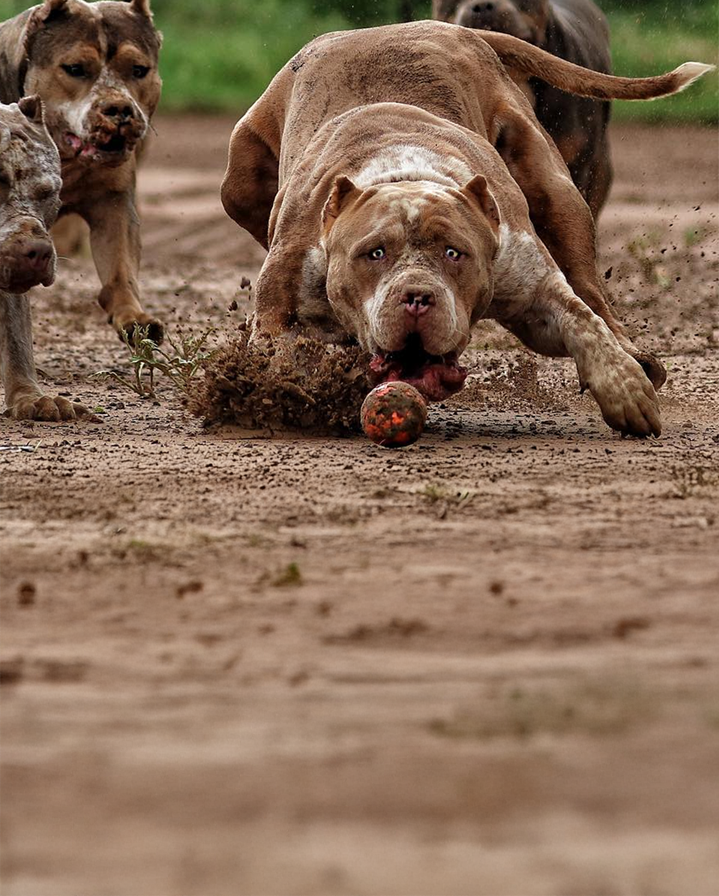How to Train a Search and Rescue Dog [Dog Trainer Explains]
Search and Rescue dogs, often abbreviated as SAR dogs, are essential collaborators with first responders in times of emergencies. SAR dogs work alongside their handlers to assist law enforcement, to respond to natural disasters, and other emergencies to locate missing people. They find victims of natural disasters. SAR dogs are useful after earthquakes, floods, as well as terrorist attacks like bombings. Unlike training a dog for a sport or other fun activity, SAR training is very serious, because people’s lives are in the paws of these dogs. Search and rescue dogs must be well-trained and confident in all situations. Owners and handlers of SAR dogs also need extensive training to assist their dogs.

Understanding SAR Dogs
SAR dogs can find victims of natural disasters buried in rubble after an earthquake. They can also be sent out to find children or elderly people who have wandered off and gotten lost. Search and rescue dogs also find people lost after avalanches or floods. They need to be in excellent physical shape, and mentally stable without any signs of aggression. SAR dogs should be confident and brave as they will need to be responsive to cues at distance. They are agile, quick learners, attentive, and have a lot of stamina to be able to do their jobs. Commonly used and the best service dog breeds are Golden Retrievers, Labrador Retrievers, and German Shepherds. Bloodhounds are also commonly used for ground tracking SAR work. However, there are no breed requirements. A variety of breeds and breed mixes work as Search & Rescue dogs and excel at the job. Generally speaking, SAR dogs and handlers are volunteers, meaning they aren’t getting paid for the hours they spend training or working to find missing people.
Getting Started with Training a Search and Rescue Dogs
Search and rescue dogs need to be well trained far beyond the level of training a regular pet receives. Once SAR dogs have mastered basic obedience, including socializing, they start to learn more specialized skills. Scent training is a key skill for SAR dogs - they must be able to quickly seek out the scent of missing people and identify where those people are so that rescuers can get to them. While all dogs possess a strong sense of smell, SAR dogs must be able to track scents over long distances and ignore all distractions to find the missing people. SAR dogs also learn how to be comfortable wearing appropriate gear such as boots. Boots protect a SAR dog's feet from being cut or burned while working on dangerous terrain.
It's not just dogs that need training. SAR handlers must also go through a significant amount of training. Handlers must be prepared to handle their dog in a disaster area. They also must identify and respond to their dogs’ alerts to find missing people. SAR handlers must be physically fit like their dogs. Search days are long, often in challenging weather or difficult terrain. If you think you want to get involved with search and rescue, start training with a local SAR group right away. These groups will be able to assess if you and your dog are going to be a good fit for search and rescue. SAR groups will also guide training to ensure your dog doesn’t develop any bad habits or have gaps in their training.
How to Train a Search and Rescue Dog?
Phase 1: Foundations of SAR Training
Because search and rescue work is physically demanding. It's best to start training with young dogs. This gives dogs the best chance of having a long working life. The first phase of SAR training is the foundation skills. This will include basic obedience, especially around distractions. SAR dogs must ignore everything: food, scents, wildlife, and other dogs while working. The most important skills for dogs at this stage of training are foundational obedience skills, and building a close trusting relationship between the dog and their owner/handler. At this stage, prospective SAR dogs will also be introduced to scent work and tracking skills. Dogs will learn to identify human scents, follow them, and accurately alert handlers to the location. For SAR dogs, searching is a fun game that is rewarded with play. Dogs who show an aptitude for search work love to work and will be enthusiastic participants picking up new skills quickly.
Phase 2: Advanced SAR Training Techniques
As dogs master foundation skills, the training gets more difficult. At this stage dogs will begin completing more complicated hides. Dogs who are trying to become avalanche search dogs will begin learning to detect the scent of people buried in snow. Cadaver dogs in training who search for human remains will start learning to identify the scent in a variety of settings including if they have been buried or are under water. SAR dogs either track/trail or air scent. Tracking dogs will begin working on learning to follow a specific human scent they have been instructed to search for. The dog will track the way the person moved and follow the path the person took. This is an especially important skill when a SAR dog is brought in to look for a missing person.
Other dogs will learn air-scenting. This search skill involves a dog ignoring the ground scents for where a person may have walked, and instead, the dog will pick up the scent of the person on the air to bring a handler to the person’s location. Air-scenting is generally used for dogs searching large areas quickly. It allows them to pinpoint the area where the scent is strongest, meaning where the missing person is. At this stage of training your search and rescue group will begin staging practice searches where volunteers pretend to be lost/missing and dogs in training practice searching for them.
Phase 3: Specialized Training
Once SAR dogs in training have learned basic and advanced scent skills they will continue with more specialized training. It prepares dogs and handlers for real-world work. This training will take the form of more difficult searches, and locating people in training environments that mimic natural areas. Searches could include finding people buried in snow to simulate an avalanche victim, wilderness areas, and on rubble piles like dogs might find after an earthquake or terrorist attack. The training environments dogs will now work in will resemble an actual working search environment, as close as possible. This ensures that SAR dogs and their handlers are prepared to work and potentially save someone’s life. Dogs who are training to be SAR dogs will at this stage also begin working at large distances from their handlers, again mimicking an actual disaster environment.
Certification and Beyond
It usually takes at least two years of dedicated training for a SAR dog to be ready to start working. Once a handler and their local training group believe that a SAR dog has mastered the necessary skills it’s time to get certified. SAR dogs and handlers are certified to document that they possess the necessary skills to assist in an emergency. This certification process tests a dog and handler’s skills and ability to find people missing or injured people in the event of an emergency. Once certified, the SAR dog and handler will be able to become official members of a local Search & Rescue group. These groups are contacted by law enforcement when their dog’s services are needed. Certification is an involved process where dog and handler must successfully complete a variety of tests to demonstrate their skill, competency, and readiness to respond in an emergency. This certification gives law enforcement confidence the dogs they are bringing in are qualified to do the job. Even after certification, the training continues. Dogs and handlers need ongoing training. SAR dogs continue training after certification to keep their skills sharp, and make sure they are mentally and physically ready to respond to a crisis when they are needed.
The most common certification options are:
FEMA - Urban Search and Rescue Certification
National Search Dog Alliance (NSDA)
National Association of Search and Rescue (NASAR)
Search and Rescue Dogs of the United States (SARDUS)
Becoming a working Search and Rescue dog takes a lot of time, effort, and training. SAR dogs and handlers volunteer their time and talent to support in emergencies. It’s not a job that every dog can do. Search and Rescue is very demanding work, but also very rewarding. If you think that you and your dog would enjoy SAR, contact local working groups in your area, to learn about getting involved in recruitment and training opportunities and begin training.










1 comment
I would like to know more about SAR dog training. I am training a 3 month old lab on obedience as of now. What do i do to start training on tracking?
Thanks
Rocky